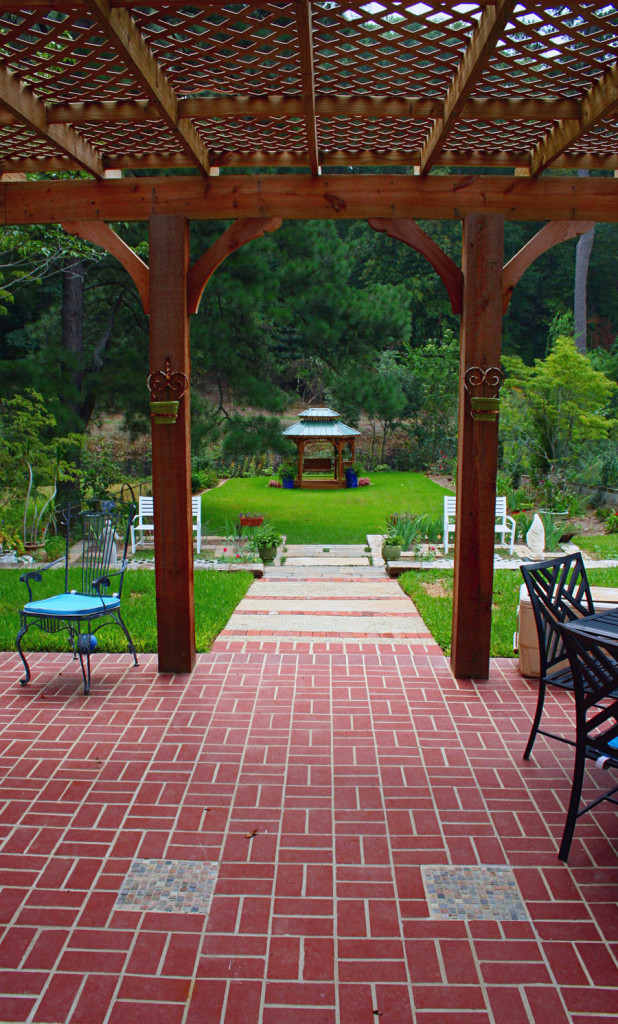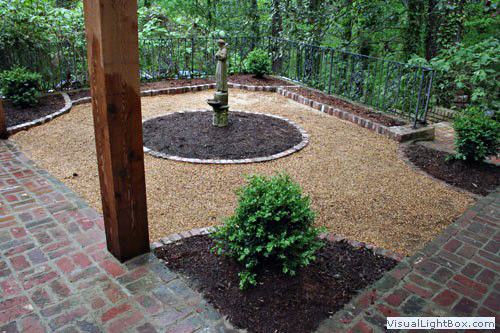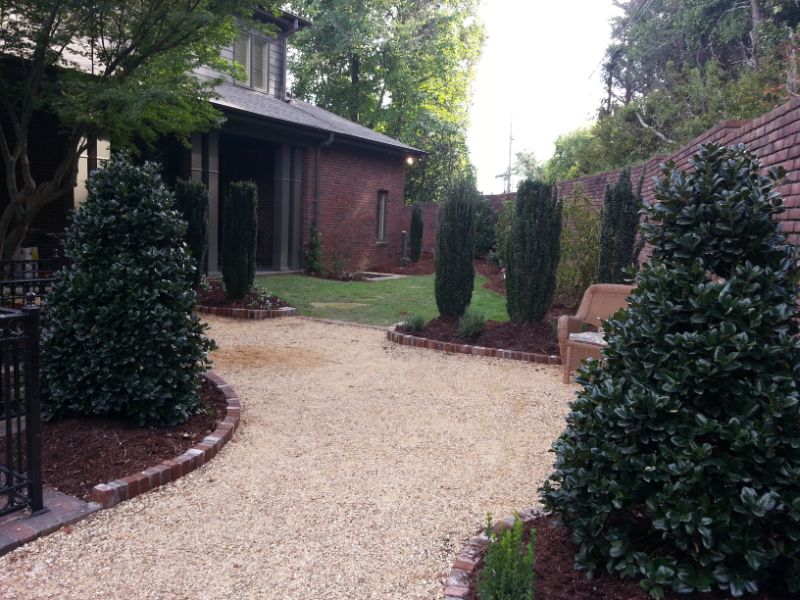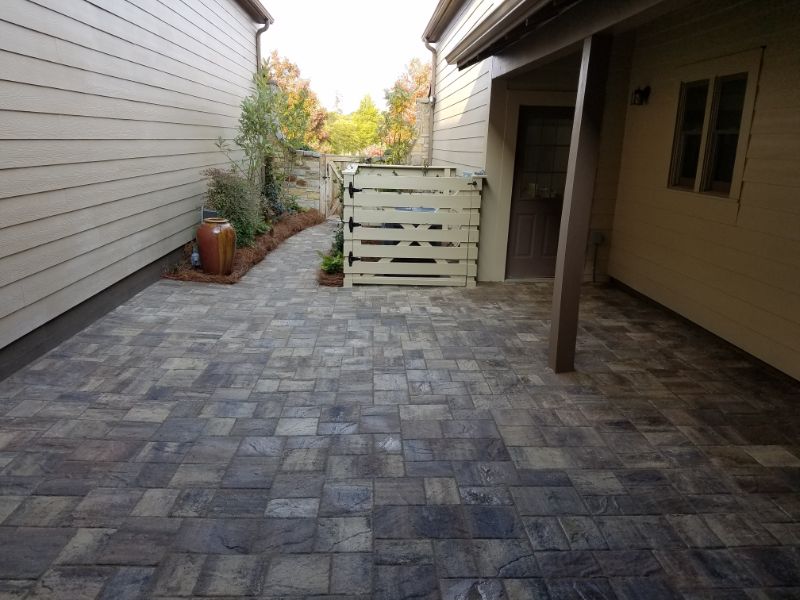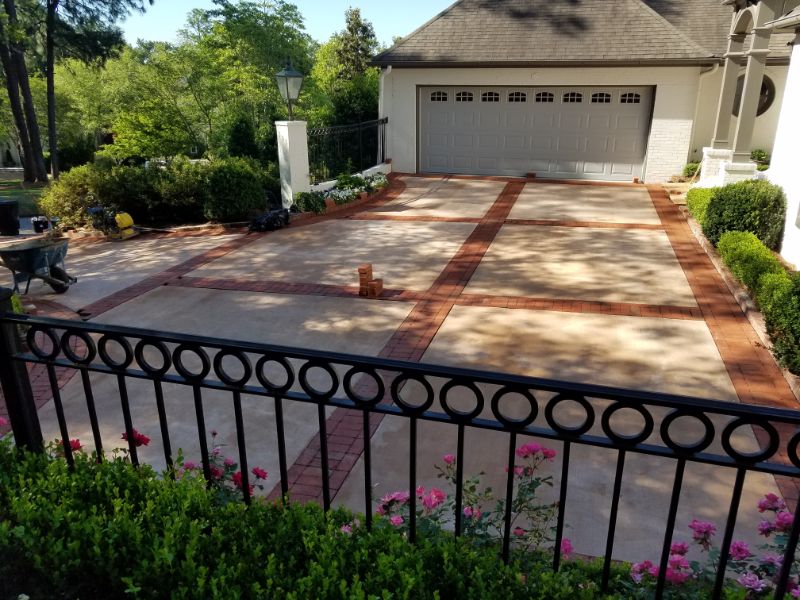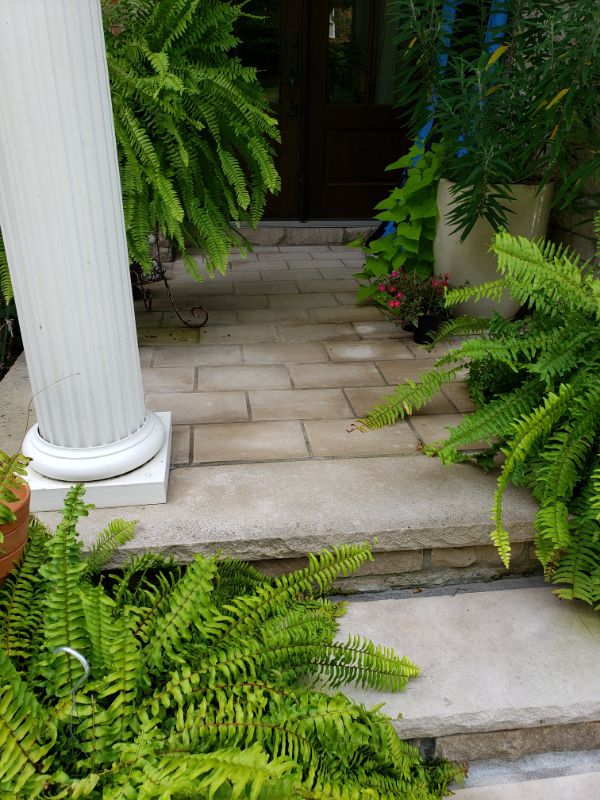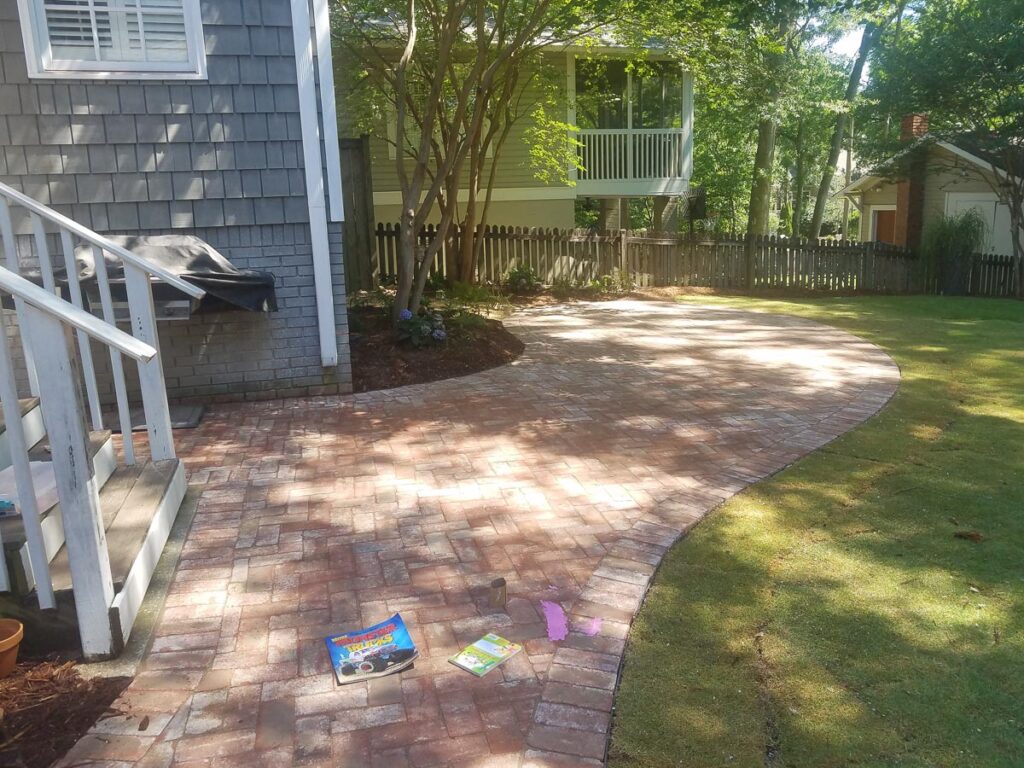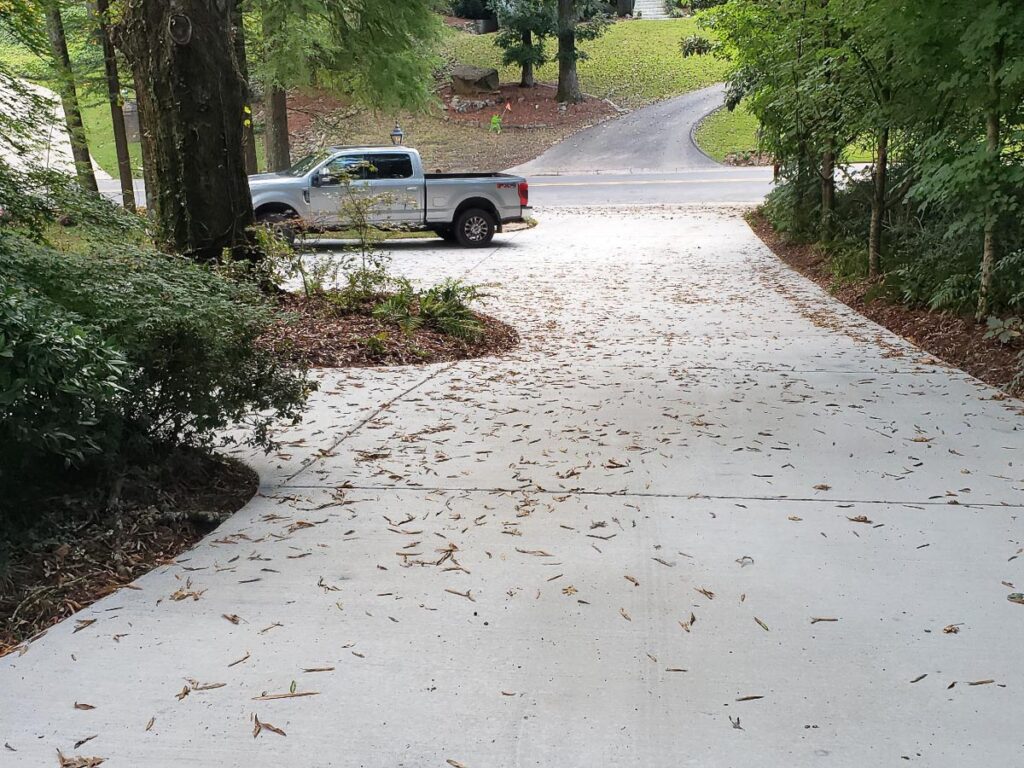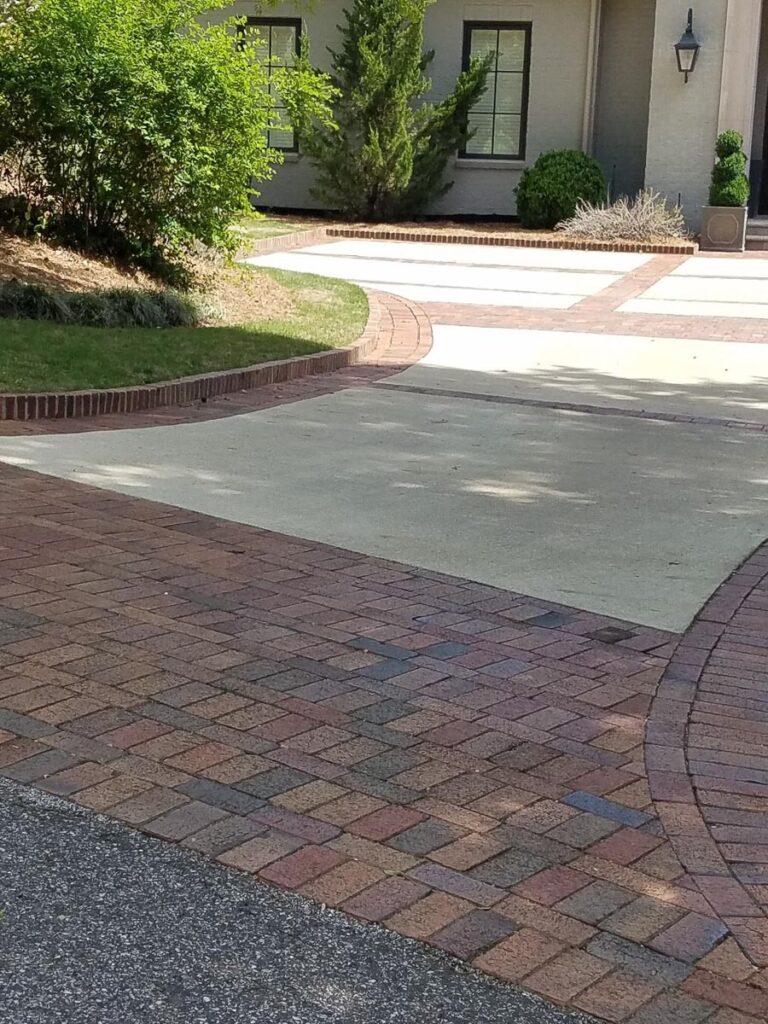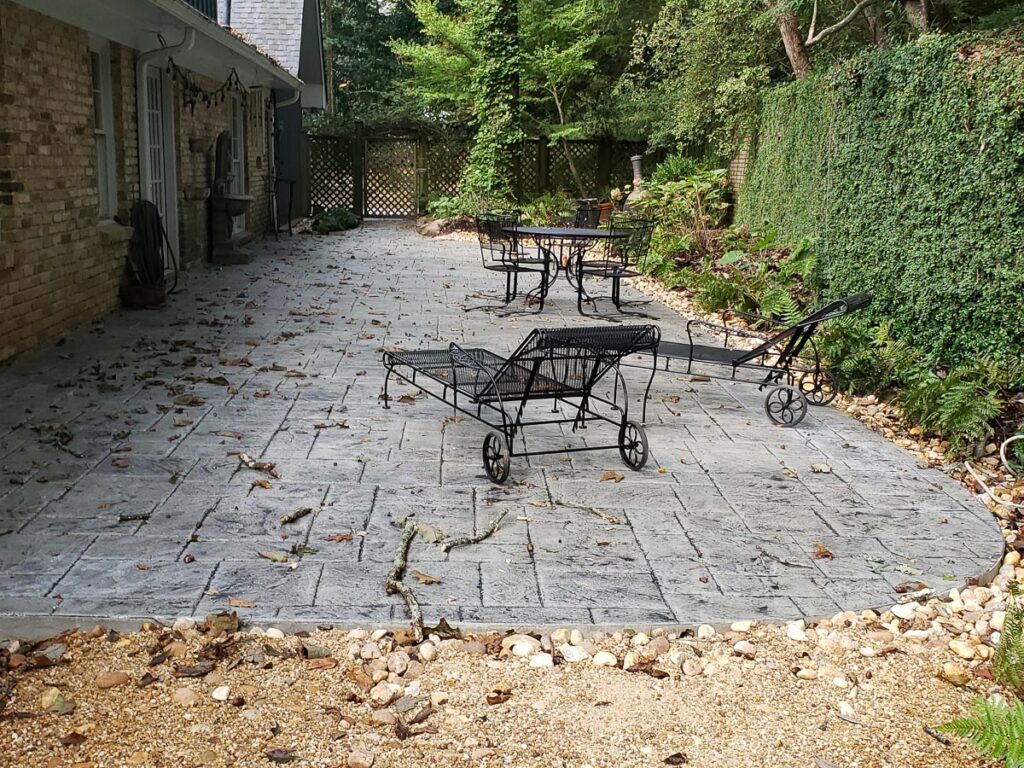Everything in these images has been designed and built by John Russell Landscape Architect
Paving is one of the most important considerations in the landscape. Paving materials vary widely and are usually selected based on budget, use and architectural merit. In general, paving is broken down into wet and dry laid methods. Wet methods refer to the use of mortars or concretes while dry methods are usually less expensive and are built without mortars or concretes.
Low Budget: The least expensive hardscape materials are crushed gravels (redrock, limestone, shells). These materials compact well and can take foot and automotive traffic. However, because they wash, they should not be used areas with moving water unless subsurface drainage is provided. Crushed gravels can also track and are not good for high heel shoes. Riverrock (rounded gravels, with sizes ranging from pea gravel to 4” stones) is a beautiful and useful material. Riverrock can be inexpensive but will probably cost more than crushed gravels. Riverrock does not compact and tends to move, but can take water movement. If used in a parking area, it is best to compact the gravel into clay. All gravel surfaces will require edging materials (wood, metal, brick, or stone). With mortar involved, the price typically goes up. Stepping stones are another low budget option and come in many shapes and sizes. These can be made from concrete, natural stone, or terra cotta. They are versatile and require no edging.
Medium Budget : Aspalt and poured concrete are both more expensive than gravels but form a solid permanent surface. Asphalt is better for vehicular rather than pedestrian use because of aesthetics. Concrete is extremely versatile, is great for almost any use and can be stamped, colored, textured and stained. No edging is required.
High Budget: Pavers can be made of either concrete or brick. Pavers are great for front walks, driveways, parking areas and patios. Typically these are dry set on sand over compacted limestone. Usually they are held in place with polymeric sand and plastic edging. These form a hard surface, will last for decades, and go with many architectural styles.
The most expensive hardscapes are flagstones, slates, and tiles set in mortar and grouted. These materials are very versatile, permanent, beautiful and expensive.
All of the paving and patios represented in this section were designed and built by John Russell Landscape Architect, Inc. and can be found on our projects.













